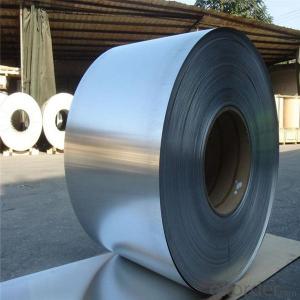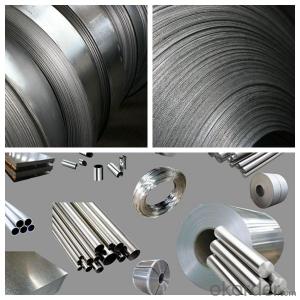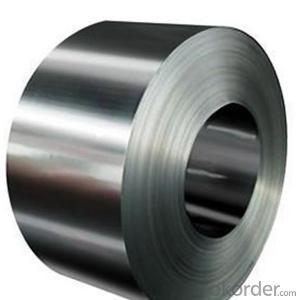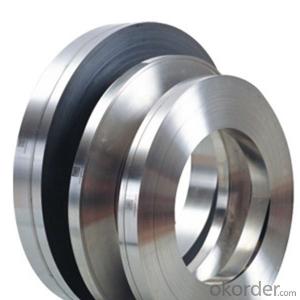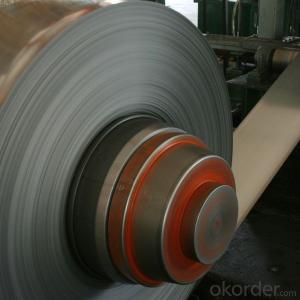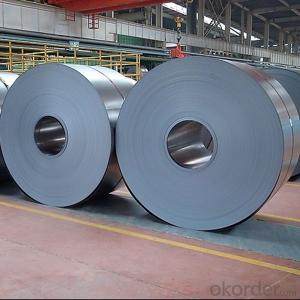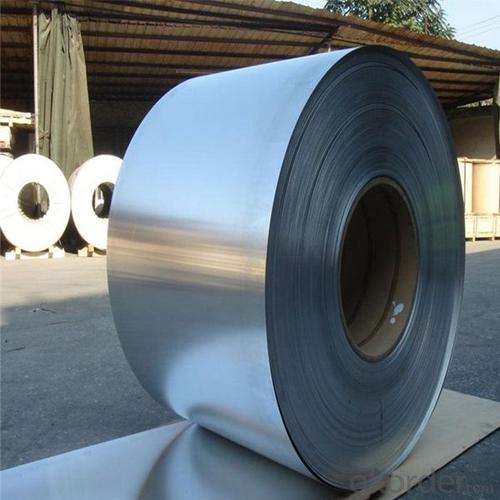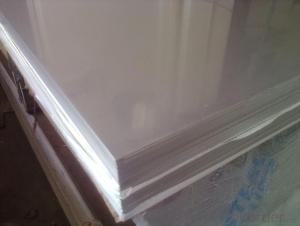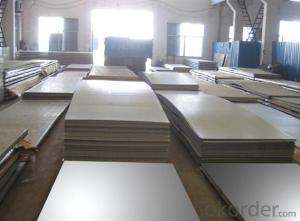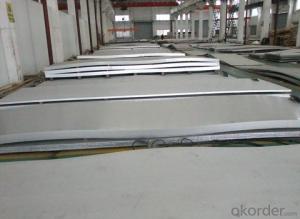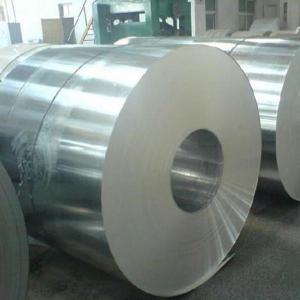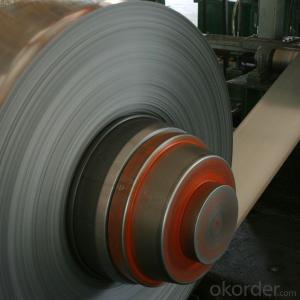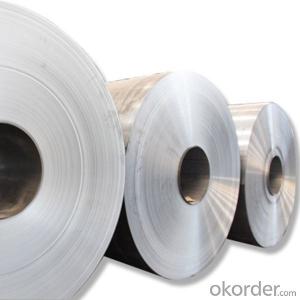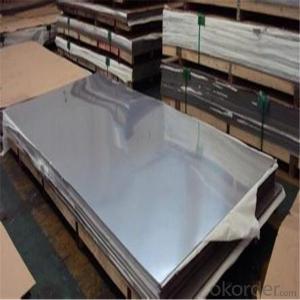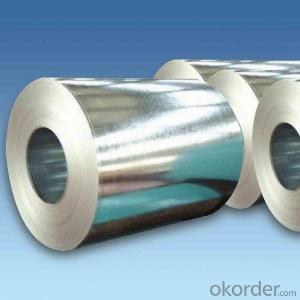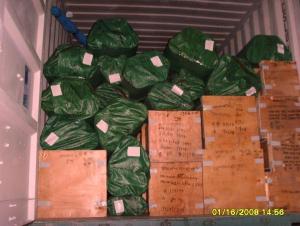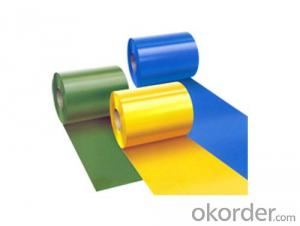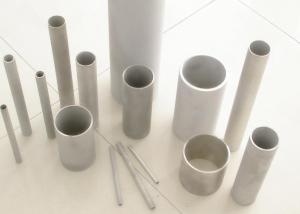Stainless Steel Coils Cold Rolled NO.2B Finish Grade 304,304L,316,316L from China Suppilier
- Loading Port:
- China main port
- Payment Terms:
- TT OR LC
- Min Order Qty:
- 18 m.t.
- Supply Capability:
- 1000000 m.t./month
OKorder Service Pledge
OKorder Financial Service
You Might Also Like
Specification
Products Description
Product | stainless steel coils/plates/sheets | ||
Discharge Port | Any Port, China | ||
Size | Coils | Cold Rolled: | Thickness0.3-8mm,Width:280-2100mm |
Hot Rolled : | Thickness3-14mm,Width:650-2100mm | ||
Plates | Thickness2-80mm,Width:1500-3000mm | ||
Coil Weight | About 20 Tons | ||
Grade | 201,202,304/304L/304H,316/316L/316H,321/H,310S,409/L,430 etc. | ||
Technique | Hot Rolled/Cold Rolled | ||
Finish | 2B, BA, 2D, No1, No2, No4,NO.8,SB etc | ||
Edge | Mill Edge / Slitting Edge | ||
Package | In bundles, or as customer's requirement | ||
Place of Origin | Made in China | ||
MOQ | 20 Tons | ||
Payment Terms | 100% LC at sight,or 30%TT in advance, balance against B/L copy | ||
Delivery Time | With 30-40 days after deposit | ||
Packaging & Delivery
Packaging Detail | Standard export packing or following customer's demand |
Delivery Time | Within 30-40 days after deposit or according to the order quantity |
Detail picture of Products:
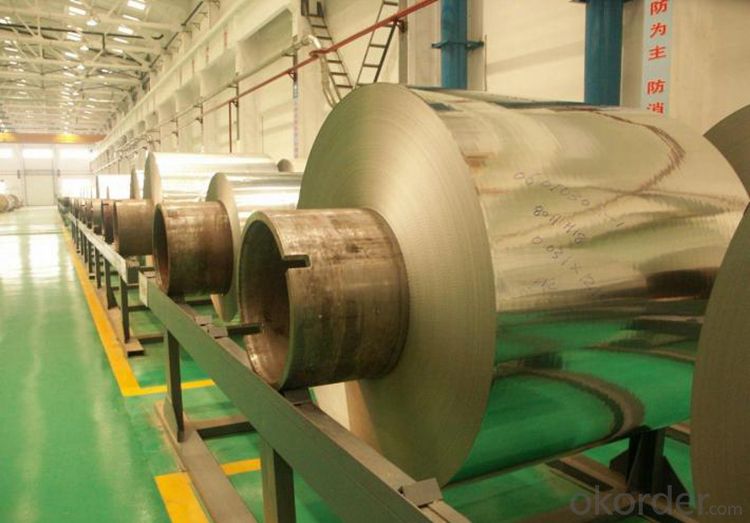
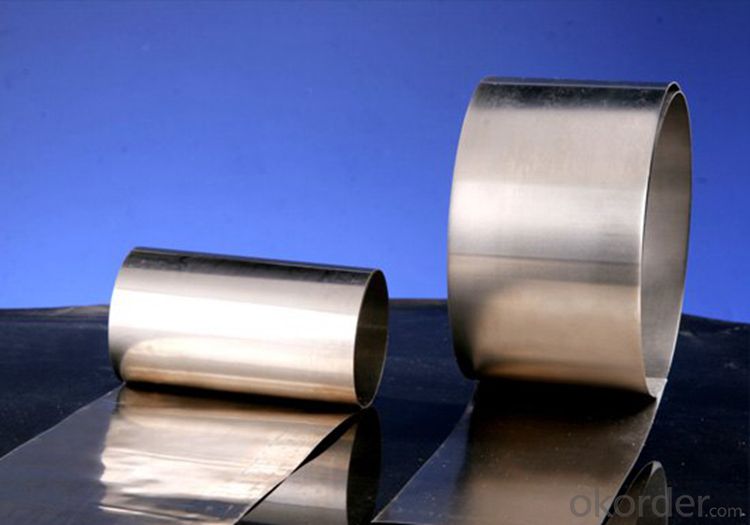
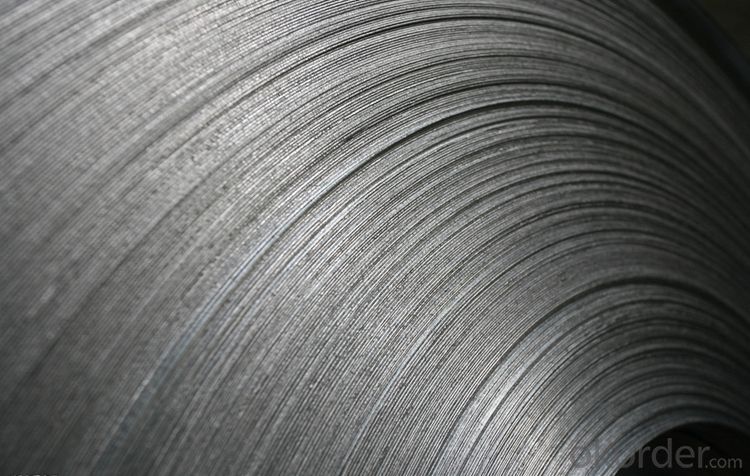
Application:
Finish | Definition | Application |
2B | Those finished, after cold rolling, by heat treatment, pickling or other equivalent treatment and lastly by cold rolling to given appropriate luster. | Medical equipment, Food industry, Construction material, Kitchen utensils. |
BA | Those processed with bright heat treatment after cold rolling. | Kitchen utensils, Electric equipment, Building construction. |
NO.3 | Those finished by polishing with No.100 to No.120 abrasives specified in JIS R6001. | Kitchen utensils, Building construction. |
NO.4 | Those finished by polishing with No.150 to No.180 abrasives specified in JIS R6001. | Kitchen utensils, Building construction, Medical equipment. |
NO.1 | The surface finished by heat treatment and pickling or processes corresponding there to after hot rolling. | Chemical tank, pipe. |


FAQ
Q: How long is the delivery time?
A: Normally 30-40 days, but mostly according to the specific requirements or the quantity
Q: Could you send me sample?
A: We can supply you with the sample for free, but the delivery charges will be covered by customers.
- Q: How do I prevent crevice corrosion on stainless steel sheets?
- To prevent crevice corrosion on stainless steel sheets, it is important to keep them clean and free from contaminants. Regularly cleaning the sheets with a mild detergent and water, followed by thorough drying, can help remove any corrosive agents. Additionally, ensuring proper ventilation and avoiding prolonged exposure to high humidity or stagnant conditions can minimize the risk of crevice corrosion. Applying a protective coating or using corrosion inhibitors specifically designed for stainless steel can provide an extra layer of protection against crevice corrosion.
- Q: Can stainless steel sheets be recycled?
- Yes, stainless steel sheets can be recycled. Stainless steel is a highly recyclable material, and it can be melted down and reused to produce new stainless steel products. Recycling stainless steel not only conserves natural resources but also helps to reduce waste and minimize environmental impact.
- Q: What are the common uses of stainless steel sheets in the food industry?
- Stainless steel sheets are commonly used in the food industry for various purposes such as food processing equipment, countertops, sinks, storage tanks, and machinery. The material's corrosion resistance, durability, and ease of cleaning make it ideal for maintaining hygienic conditions and preventing contamination in food preparation and storage areas.
- Q: Are stainless steel sheets non-magnetic?
- No, stainless steel sheets are not inherently non-magnetic. While certain types of stainless steel can be non-magnetic, such as the austenitic variety (grades like 304 and 316), many other types of stainless steel can still exhibit magnetic properties. This is particularly true for ferritic and martensitic stainless steels. The magnetism in stainless steel is determined by its composition and crystal structure. So, if you are specifically looking for non-magnetic stainless steel sheets, you should opt for the austenitic grades.
- Q: Are stainless steel sheets suitable for medical equipment?
- Indeed, medical equipment can be fabricated using stainless steel sheets. The utilization of stainless steel in medical equipment is widely favored due to its remarkable resistance to corrosion and its ability to endure. It boasts effortless cleaning and sterilization, rendering it fitting for employment in healthcare facilities where cleanliness and hygiene are paramount. Furthermore, the high strength-to-weight ratio of stainless steel permits the creation of lightweight yet robust medical equipment. Moreover, its magnetic permeability is low, rendering it an ideal option for situations necessitating minimal electromagnetic interference. All in all, stainless steel sheets are a dependable and pragmatic selection for the production of medical equipment.
- Q: Can stainless steel sheets be used in chemical processing plants?
- Yes, stainless steel sheets are commonly used in chemical processing plants due to their excellent corrosion resistance and high strength properties, making them suitable for handling various chemicals and harsh environments.
- Q: What is the maximum width available for stainless steel sheets?
- The maximum width available for stainless steel sheets can vary depending on the manufacturer and specific product, but it typically ranges from 48 inches to 72 inches.
- Q: What are the different types of stainless steel sheet finishes for industrial applications?
- In industrial applications, various types of stainless steel sheet finishes are commonly utilized. These finishes serve different purposes in terms of durability, resistance to corrosion, and aesthetics. 1. No. 1 Finish: This finish is achieved through a process of hot rolling, annealing, and pickling, resulting in a rough and dull surface. It finds its application in structural components or areas where a smooth surface is not essential. 2. No. 2B Finish: Achieved by cold rolling, annealing, and pickling, this finish offers a moderately reflective and smooth surface. It is commonly used in applications where both corrosion resistance and appearance are important, such as kitchen appliances, architectural components, and food processing equipment. 3. No. 4 Finish: This finish is obtained by polishing with abrasive belts or brushes, resulting in a matte appearance. It is often employed in applications where a decorative finish is desired, such as furniture, elevator panels, and signage. 4. No. 8 Finish: Also known as a mirror finish, this is the most reflective finish available for stainless steel sheets. It is achieved by progressively polishing with finer abrasives until a highly reflective surface is obtained. This finish is commonly used for architectural accents, automotive trims, and decorative items that require a high level of reflectivity and a pleasing appearance. 5. BA Finish: This finish is achieved through annealing in a controlled atmosphere furnace, resulting in a highly reflective and smooth surface. It is commonly used in applications where a mirror-like finish is desired, such as decorative items, reflectors, and light fixtures. These are just a few examples of the various stainless steel sheet finishes commonly employed in industrial applications. Each finish possesses unique properties and is suitable for different purposes. Therefore, it is crucial to carefully consider the specific requirements of the application when selecting a finish.
- Q: Are stainless steel sheets resistant to radiation?
- Yes, stainless steel sheets have excellent resistance to radiation. The high levels of chromium present in stainless steel make it highly resistant to corrosion and oxidation caused by radiation exposure. This property makes stainless steel sheets a suitable choice for various applications in nuclear power plants, medical facilities, and other industries that involve exposure to radiation.
- Q: Are stainless steel sheets resistant to acids?
- Yes, stainless steel sheets are resistant to acids. Stainless steel is known for its corrosion resistance, and this resistance extends to acids as well. The chromium content in stainless steel forms a protective layer, known as a passive film, that prevents the metal from reacting with acids. This passive film acts as a barrier, making stainless steel sheets highly resistant to a wide range of acids, including both organic and inorganic acids. However, it is important to note that the level of resistance can vary depending on the grade and composition of the stainless steel. Some grades, such as 304 and 316, are particularly resistant to acids, making them suitable for various applications in industries such as chemical processing, food processing, and pharmaceuticals. Nonetheless, even with their resistance to acids, stainless steel sheets may still be susceptible to certain aggressive acids or prolonged exposure to highly corrosive environments. Therefore, it is essential to consult with experts and choose the appropriate grade of stainless steel for specific acid-resistant applications.
Send your message to us
Stainless Steel Coils Cold Rolled NO.2B Finish Grade 304,304L,316,316L from China Suppilier
- Loading Port:
- China main port
- Payment Terms:
- TT OR LC
- Min Order Qty:
- 18 m.t.
- Supply Capability:
- 1000000 m.t./month
OKorder Service Pledge
OKorder Financial Service
Similar products
Hot products
Hot Searches
Related keywords
